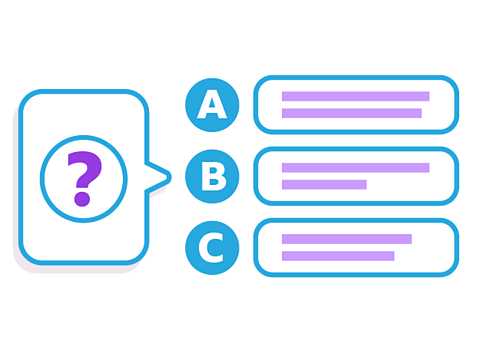Key points about conjugated verbs in Spanish

- A conjugated verb is broken down into I, you, he/she/it, we and they.
- For example, the verb 'to be' conjugated in the present tense is: I am, you are, he/she is, we are, and they are.
- Regular verbs are conjugated to set patterns.
- Irregular verbs are not conjugated to set patterns.
Video - How to conjugate verbs
Watch the video to learn about using verbs in Spanish.
An explanation of the uses of the present tense and how to conjugate it
It is my birthday - Es mi cumpleaГ±os.
I am 15 years old - Tengo 15 aГ±os.
When you talk about something that happens regularly or describe what something does or is doing, then you use the present tense.
The first part of the verb you need to learn is the infinitive. It’s the one you find if you look it up and translates as 'to do something'.
There are three main types of verb: ar verbs like hablar - to speak, er verbs like comer - to eat and ir verbs like vivir - to live.
When you talk about different people, the endings of the verb change. Let’s start with ar verbs. Take bailar - to dance, the endings change like this: bailo, bailas, baila, bailamos, ІъІ№ѕ±±фГЎѕ±Іх, bailan.
All regular verbs ending in ar follow that pattern. Like cantar - to sing and hablar - to speak. And remember, in Spanish, you don’t need to use the pronouns, words like I, you, he and she, because their endings tell you who is doing what.
He dances – baila. They dance – bailan.
What is a conjugated verb?
All Spanish verbs end in either ar, в¶ДЇer o°щ в¶ДЇir in the infinitive. The infinitive is the form of the verb you will find in a dictionary.
For example:
Sorry, something went wrongCheck your connection, refresh the page and try again. - to talk
Sorry, something went wrongCheck your connection, refresh the page and try again. - to eat
Sorry, something went wrongCheck your connection, refresh the page and try again. - to live
The infinitive doesn't show:
the person of the verb (who is doing the action)
the tense of the verb (when the action takes place / took place / will take place, etc).
To show who is doing the action and when the action is taking place, the verb needs to be conjugated. This means changing the verb into a different form.
Verbs are conjugated according to the type of verb they are (ar / er / ir) and whether they are regular or irregular.
To work out how to conjugate a verb correctly, think about:
the type of verb it is (ar / e°щ / i°щ)
the tense of the verb
who is doing the action of the verb
An example of conjugation
The table below shows an example of how regular ar verbs in the present tense are conjugated. Note how the endings change to match the pronoun.
To conjugate regular ar verbs, remove the ar  from the infinitive and add the correct ending:
| subject pronoun | Sorry, something went wrongCheck your connection, refresh the page and try again. - to talk | |
|---|---|---|
| I | yo | Sorry, something went wrongCheck your connection, refresh the page and try again. |
| you (informal) | іЩГє | Sorry, something went wrongCheck your connection, refresh the page and try again. |
| he/she/it and you (formal) | Г©±ф/±р±ф±фІ№ and usted | Sorry, something went wrongCheck your connection, refresh the page and try again. |
| we | nosotros/as | Sorry, something went wrongCheck your connection, refresh the page and try again. |
| you (informal plural) | vosotros/as | Sorry, something went wrongCheck your connection, refresh the page and try again. |
| they/you (formal plural) | ellos/ellas/ustedes | Sorry, something went wrongCheck your connection, refresh the page and try again. |
For more on how to conjugate regular ar, er and ir verbs have a look at the present tense guide.

Remember
In Spanish, it isn't usually necessary to use the subject pronoun (I/you/he/she/it etc). The verb ending makes it clear who is doing the action.
For example:
Sorry, something went wrongCheck your connection, refresh the page and try again. - you dance
Sorry, something went wrongCheck your connection, refresh the page and try again. - we drink
Sorry, something went wrongCheck your connection, refresh the page and try again. - they write
Conjugated verbs - Mini quiz

Complete this sentence by conjugating the verb with the correct present tense ending:
Me llamo Pablo y trabaj_ en una tienda.
infinitive = trabajar
Me llamo Pablo y trabajo en una tienda.
My name is Pablo and I work in a shop.
The verb is in the 'I' form.
Complete this sentence by conjugating the verb with the correct present tense ending.
Hugo no llev_ uniforme.
infinitive = llevar
Hugo no lleva uniforme.
Hugo doesn't wear a uniform.
The verb is in the 'he/she' form.
Quiz - Conjugated verbs
Practise what you've learned about the conjugation of verbs in Spanish with this quiz.
Now you have learned about the conjugation of verbs in Spanish why not explore present tense irregular verbs in Spanish?
More on How verbs work
Find out more by working through a topic
- count1 of 2
